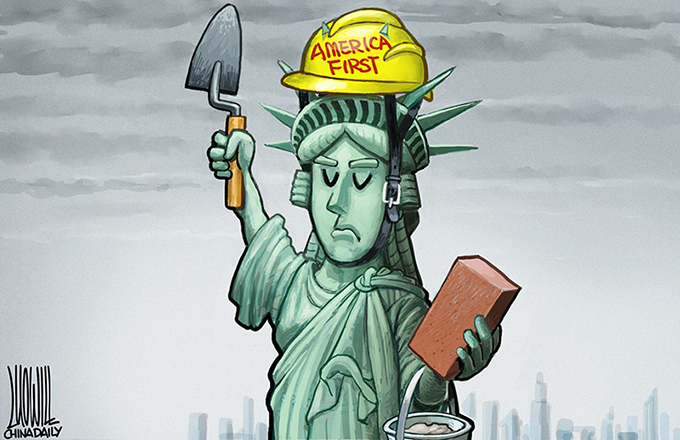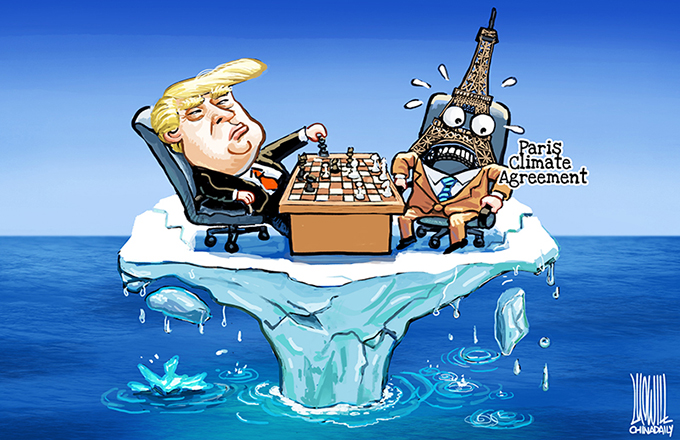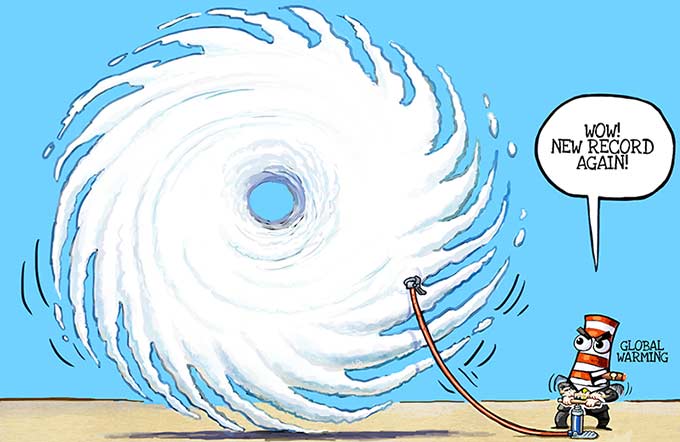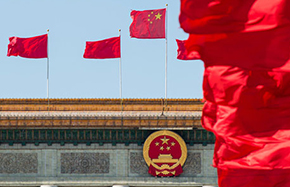Ready when you are: China's opening economy
China is in the midst of the government's 13th Five-Year Plan, which aims to achieve a fully open capital market by 2020. Significant challenges remain, but we see reasons for optimism.
 |
|
Andy Seaman?[Photo provided to chinadaily.com.cn]? |
Although barriers persist, multiple market access initiatives have been launched in recent years. These include the Mainland-Hong Kong Bond Connect schemes, the Shanghai-and Shenzhen-Hong Kong stock connects, the Qualified Foreign Institutional Investors (QFII) program and the Mutual Recognition of Funds (MRF) fund passport.
At the same time, renminbi (RMB) internationalisation has continued apace. The implementation of a more transparent exchange rate fixing mechanism in May 2017 has taken a degree of the guesswork out of evaluating RMB valuation. This follows the milestone of the currency's addition to the IMF SDR currency basket in 2016 and comes alongside growing renminbi-denominated trade settlement, albeit from a low base.
Against this backdrop, many investors are trying to decide: Is now the right time to add China exposure to my portfolio? Which of the market access schemes is the best channel to use? And, perhaps most importantly, can China surmount the myriad challenges it faces and deliver the growth that I seek.
Reasons to be optimistic
We see many reasons to be optimistic about China's economy. First, increased transparency around RMB valuation has increased the currency's stability and industrial sector profitability is on an improving trend. Together, these factors have given policymakers further room to move forward with financial sector reform that has the potential to underpin long-term growth.
Second, China's high national savings, which are forecast to reach 45% of GDP this year according to the IMF, act as a buffer against any potential problems with debt. The country's foreign exchange reserves stand at about US$3 trillion, giving the People's Bank of China (PBoC) significant room to maintain currency stability and offset any incidences of material capital flight.
Third, Moodys upgraded the outlook for China's banking system from negative to stable in July 2017. According to the ratings agency, the country expects non-performing loan formation rates to remain relatively stable at the current level. Similarly, the rating agency believe recent policy measures to curb shadow banking help mitigate asset risk for banks by addressing a key financial system imbalance.
From a wider macroeconomic perspective, the Belt and Road Initiative is set to boost trade connectivity and cooperation between China and its Eurasian neighbours. This should support further RMB integration to the world economy and buoy China's economic growth prospects.
Challenges to market opening
Despite these favourable factors, many international investors remain wary of entering China's capital market. After all, it is easy to paint a negative outlook, with growth having fallen to “only 6.9% yoy” from the double-digit rate enjoyed in much of the 1990s and 2000s. However, the country's GDP is just one indicator of economic expansion. Indeed, Beijing continues to transform the country's economy away from an easily measured industrial base to a consumer-led model.
A deleveraging cycle and property market cooling measures are further causes for concern among pessimists. However, the housing and land sectors have proven resilient based on sustained demand and deleveraging is likely to prove positive for growth in the longer term. Indeed, short-term pain due to slower growth and high debt levels doesn't seem to be affecting the economy as much as some might have suggested, or even hoped.
Finally, transparency and predictability are oft-cited concerns in China. The nation's capital markets are still evolving and corporate transparency and the domestic credit rating cultures are evolving and converging to global standards. In our view, China investors are learning to demand higher transparency and predictability. They are used to investing in wealth management products with high returns that are backed by implicit government guarantees. The need to shift from attractive returns with little or no risk to making investment decisions based on risk-adjusted returns is a painful but necessary evolution.
China is too big to miss
In addition to being the second-largest economy in the world, China is home to the world's third biggest bond market in the world, and it is underrepresented in global bond indices. But that is changing. Most people do not appreciate the scale of the potential demand for renminbi in the future, and that is something to keep an eye on. The growing representation of domestic Chinese securities in global investment indices pies a major milestone in this development. In March, Citi announced the inclusion of China in its emerging market and regional government bond indices.
Concrete steps taken so far include China is currently facing a huge task in fully opening its economy under the auspicious of the 13th five-year plan, which focuses on enhancing transparency and predictability. In fact, China's market has arguable already been opened.
Indeed, policymakers have taken steps to initiate economic change and openness. What matters is not how much is going in or out of China's capital markets, but that the channels exist in the first place. It may take more than the two and a half years left in the 13th five-year plan to achieve a fully open market economy in practice. But the framework in place to support an open market as global interest and faith in China grows and investors come to appreciate the opportunities on offer.
The author is Partner and Chief Investment Officer at Stratton Street.





















